
| Published by Tuttle Publishing, an imprint of Periplus Editions (HK) Ltd www.tuttlepublishing.com coffee 2009 Periplus Editions (HK) Ltd. All rights reserved. | Distributors North America, Latin America and Europe Tuttle Publishing, 364 Innovation Drive North Clarendon, VT 05759-9436, U.S.A. Tel: 1 (802) 773-8930; Fax: 1 (802) 773-6993 info@tuttlepublishing.com www.tuttlepublishing.com |
| Recipes by Daniel Reid, Kenneth Law, Lee Cheng Meng, Max Zhang, Cecilia Au-Yang, Rohani Jelani, Wendy Hutton, Photography by A Chester Ong, Luca Invernizzi Tettoni, Suan I Lim, Edmond Ho, Stryke@shotsighted.com. Food styling by A Chester Ong, Cecilia Au-Yang, Susie Donald, Christina Ong, Periplus Style Shop. | ISBN: 978-1-4629-0492-1 (ebook) Printed in Malaysia 12 11 10 5 4 3 2 |

Contents
MAIL ORDER SOURCES Finding the ingredients for Asian home cooking has become very simple.
ISBN: 978-1-4629-0492-1 (ebook) Printed in Malaysia 12 11 10 5 4 3 2 | 
Contents
MAIL ORDER SOURCES Finding the ingredients for Asian home cooking has become very simple.
Most supermarkets carry staples such as soy sauce, fresh ginger, and fresh lemongrass. Almost every large metropolitan area has Asian markets serving the local populationjust check your local business directory. With the Internet, exotic Asian ingredients and cooking utensils can be easily found online. The following list is a good starting point of online merchants offering a wide variety of goods and services. http://www.asiafoods.com http://www.geocities.com/MadisonAvenue/8074/VarorE.html http://dmoz.org/Shopping/Food/Ethnic_and_Regional/Asian/ http://templeofthai.com/ http://www.orientalpantry.com/ http://www.zestyfoods.com/ http://www.thaigrocer.com/Merchant/index.htm http://asianwok.com/ http://pilipinomart.com/ http://www.indiangrocerynet.com/ http://www.orientalfoodexpress.com/ Introduction W hat is the reason for the enduring worldwide popularity of Chinese food? It begins with a cornucopia of unique ingredients, vegetables and nourishing tofu, plus sauces and seasonings that are partnered with just about every creature that swims the seas, flies the air or roams the land. This astonishing variety of ingredients is transformed by the Chinese into memorable works of culinary art.
Every dish must meet three criteria appearance, fragrance and flavor; other considerations are texture, the health-giving properties of the food and its auspicious connotations. The array of seasonings and sauces used by Chinese cooks is not vast; nor are a large range of culinary techniques employed. However, the endless interplay of one basic ingredient with anothermeat with tofu, vegetables with slivers of porkand the transformation of these basics when combined with different seasonings, allows for almost endless variety. The most essential utensil in Chinese cooking is the woka parabolic pan traditionally made of cast iron and used for just about everything except cooking rice: stir-frying, deep-frying, braising, making sauces, holding a steaming basket and so on. Claypots of various shapes and sizes are used for slow cooking and for making soups and stocks. These are attractive and inexpensive, but any type of saucepan could be used instead.
Steaming is a healthy method of cooking favored by the Chinese, who traditionally use a multi-tiered bamboo steamer with a woven cover that absorbs any moisture, unlike a metal cover where moisture condenses and then falls back onto the food. The steaming basket is placed inside a wok, sitting a few inches above the boiling water. Stir-frying is by far the most commonly used method. Other simple methods include steaming, braising, deep-frying and slow cooking. Timing is absolutely crucial to the success of Chinese dishes. Most food is cooked very briefly, so it is essential to chop all the ingredients, measure all the seasonings, and have garnishes and serving dishes ready before starting to cook.
Control of heat is also important, and for this reason, a gas flame is far superior to any other form of heat. Make sure you prepare and place the ingredients near the stove in order of use. And remember, as any Chinese cook would agree, practice makes perfect. Basic Chinese Ingredients Black bean paste is a richly-flavored seasoning made from soybeans, similar to Japanese miso (which may be used as a substitute). The beans are fermented and salted and sold in jars. They vary in color from dark brown to light golden.
The basic black bean paste contains only soybeans, water and salt. It is also possible to buy slightly sweetened versions or those with added chili. The beans are usually mashed with the back of a spoon before use. 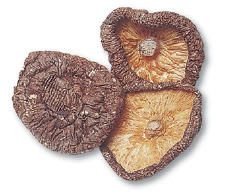 Black Chinese mushro oms , also known as shiitake mushrooms, are used widely in Chinese cooking. Dried ones must be soaked in hot water to soften before use, from 15 minutes to an hour depending on the thickness. The stems are removed and discarded; only the caps are used.
Black Chinese mushro oms , also known as shiitake mushrooms, are used widely in Chinese cooking. Dried ones must be soaked in hot water to soften before use, from 15 minutes to an hour depending on the thickness. The stems are removed and discarded; only the caps are used.
Substitute porcini mushrooms. Fresh shiitake are widely available in many supermarkets now.  Black Chinese vinegar is made from rice, wheat and millet or sorghum. The best black vinegars are aged and have a complex, smoky flavor similar to balsamic, which may be substituted. Chinese cooks add black vinegar sparingly to sauces, dips and when braising meats.
Black Chinese vinegar is made from rice, wheat and millet or sorghum. The best black vinegars are aged and have a complex, smoky flavor similar to balsamic, which may be substituted. Chinese cooks add black vinegar sparingly to sauces, dips and when braising meats. 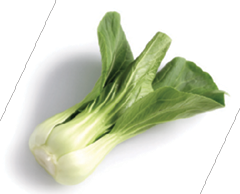 Bok choy is a highly nutritious variety of cabbage with long, crisp stalks and spinach-like leaves.
Bok choy is a highly nutritious variety of cabbage with long, crisp stalks and spinach-like leaves.
It has a clean, slightly peppery flavor and is a wonderful addition to soups and stir-fries. It is available in many large supermarkets. Bottled sweet c hili sauce is a commercial blend of chili, vinegar, garlic and salt. Usually used as a dipping sauce, it can also be used on noodles and barbecued meats. Store in the refrigerator after opening. 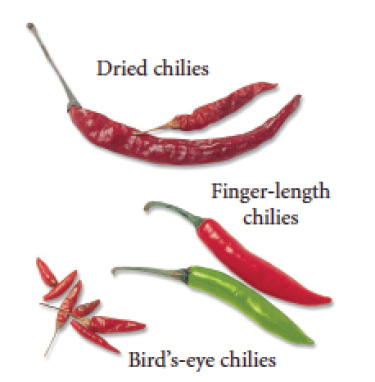 Chili peppers come in many shapes, sizes and colors.
Chili peppers come in many shapes, sizes and colors.
Fresh green and red Asian finger-length chilies are moderately hot. Dried chilies are usually deseeded, cut into lengths and soaked in warm water to soften before use. Ground red pepper , also known as cayenne pepper, is a pungent red powder made from ground dried chilies. Substitute dried red chili flakes or chili paste. Chili oil is made from dried chilies or chili powder infused in oil, which is used to enliven some Sichuan dishes. 
Next page
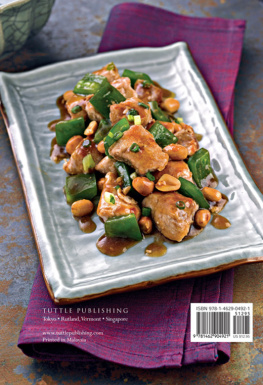

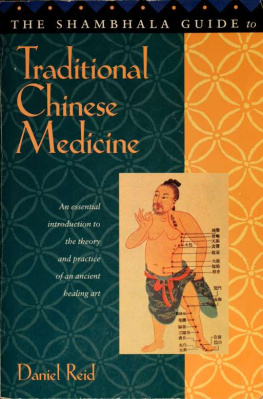
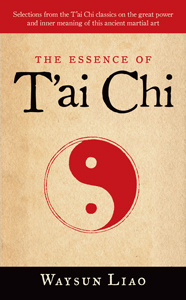
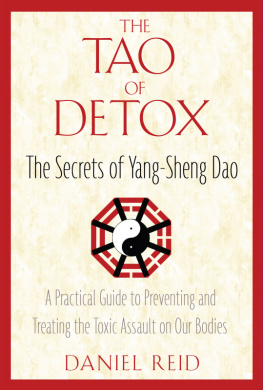

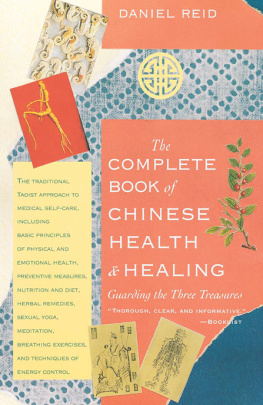


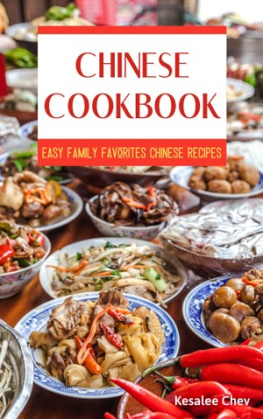
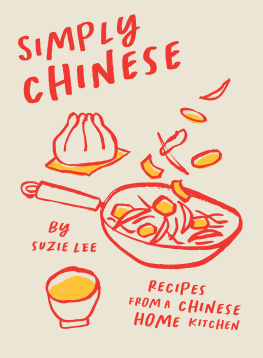
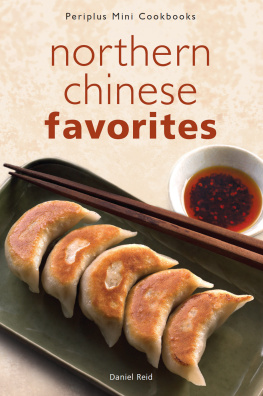

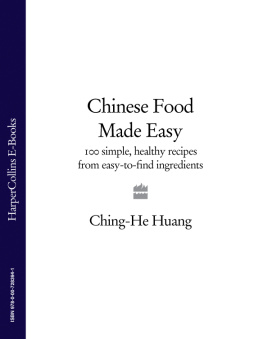

 Contents
Contents  Black Chinese mushro oms , also known as shiitake mushrooms, are used widely in Chinese cooking. Dried ones must be soaked in hot water to soften before use, from 15 minutes to an hour depending on the thickness. The stems are removed and discarded; only the caps are used.
Black Chinese mushro oms , also known as shiitake mushrooms, are used widely in Chinese cooking. Dried ones must be soaked in hot water to soften before use, from 15 minutes to an hour depending on the thickness. The stems are removed and discarded; only the caps are used. Black Chinese vinegar is made from rice, wheat and millet or sorghum. The best black vinegars are aged and have a complex, smoky flavor similar to balsamic, which may be substituted. Chinese cooks add black vinegar sparingly to sauces, dips and when braising meats.
Black Chinese vinegar is made from rice, wheat and millet or sorghum. The best black vinegars are aged and have a complex, smoky flavor similar to balsamic, which may be substituted. Chinese cooks add black vinegar sparingly to sauces, dips and when braising meats.  Bok choy is a highly nutritious variety of cabbage with long, crisp stalks and spinach-like leaves.
Bok choy is a highly nutritious variety of cabbage with long, crisp stalks and spinach-like leaves. Chili peppers come in many shapes, sizes and colors.
Chili peppers come in many shapes, sizes and colors.